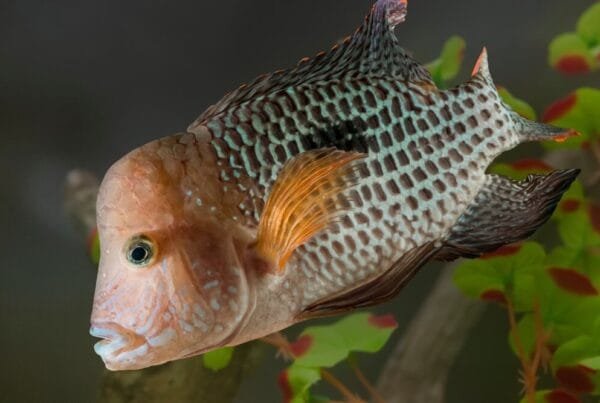Have you ever heard of the adorable and fascinating Pea Puffer? This tiny freshwater fish, scientifically known as Carinotetraodon travancoricus, is a popular choice among aquarists for its vibrant colors and unique behaviors. With its petite size and peaceful demeanor, the Pea Puffer proves to be an enticing addition to any aquarium enthusiast’s collection. In this article, we will explore the captivating world of the Pea Puffer, uncovering its intriguing characteristics and offering valuable insights into its care and keeping. Get ready to dive into the enchanting realm of the Pea Puffer!
Introduction
The Pea Puffer, also known as the Dwarf Puffer or Pygmy Puffer, is a fascinating little fish that is sure to capture your heart. Its small size and unique appearance make it a popular choice among fish enthusiasts. In this article, we will explore the many aspects of the Pea Puffer, including its appearance, natural habitat, tank requirements, water parameters, tank setup, tank mates, feeding habits, breeding habits, common diseases, and conclude with some final thoughts.
Appearance
The Pea Puffer is a small, round-bodied fish that grows to about 1 inch in length. Its body is adorned with striking patterns of various hues, including yellow, green, and brown. It has a distinctive beak-like mouth and bulging eyes that give it a captivating expression. One of the most fascinating features of the Pea Puffer is its ability to inflate itself when threatened, making it look even more adorable.
Natural Habitat
The Pea Puffer is native to freshwater bodies in India, Thailand, and other parts of Southeast Asia. It is typically found in slow-moving waters, such as swamps, ponds, and rivers. In its natural habitat, the Pea Puffer enjoys exploring vegetation and hiding among submerged branches and rocks. These natural habitats provide the fish with shelter and plenty of opportunities to hunt for food.
Tank Requirements
When it comes to setting up a tank for Pea Puffers, there are a few key factors to consider. Firstly, the tank size should be at least 10 gallons to provide sufficient space for the fish to swim and explore. Secondly, the tank should be heavily planted, as Pea Puffers love to hide and swim among vegetation. Providing a variety of hiding spots, such as caves or moss balls, will help create a comfortable environment for these little fish. Lastly, be sure to provide a secure lid for the tank, as Pea Puffers are known to be great jumpers.
Water Parameters
Maintaining the appropriate water parameters is crucial for the health and well-being of your Pea Puffers. The water temperature should be kept between 74 to 82 degrees Fahrenheit (23 to 28 degrees Celsius). The pH level should range from 7.0 to 8.0, and the water hardness should be between 5 to 20 dH. It is also important to regularly monitor the water quality, and perform regular water changes to keep the tank clean and free of harmful pollutants.
Tank Setup
Creating an ideal tank setup for Pea Puffers involves careful consideration of their natural habitat and behaviors. As mentioned earlier, a heavily planted tank is essential. Aquatic plants like Java moss, Anubias, and Hornwort are excellent choices to create a lush and natural environment. It is also recommended to add some driftwood and rocks to provide additional hiding spots and territorial boundaries. Ensure that there are no sharp edges or rough surfaces that could harm the Puffers delicate skin.
Tank Mates
When it comes to tank mates, it is important to choose companions that will peacefully coexist with your Pea Puffers. Due to their territorial nature and occasional aggressive tendencies, it is best to keep Pea Puffers in a species-only tank or with other hardy fish that can hold their own. Avoid keeping them with fin-nipping species or overly aggressive fish. Some compatible tank mates include Corydoras catfish, Otocinclus catfish, and small peaceful tetras.
Feeding
Pea Puffers are carnivorous fish that have a unique feeding habit – they are snail hunters. While they will readily eat small invertebrates like brine shrimp, bloodworms, and daphnia, their favorite meal is snails. Providing a balanced diet is essential for their health, so supplement their diet with frozen or live foods. It is important to note that Pea Puffers have small stomachs, so feed them small portions throughout the day rather than one large meal.
Breeding
Breeding Pea Puffers can be a challenging task, as they have specific requirements for successful reproduction. To encourage breeding, it is best to create a separate breeding tank with plenty of hiding spots and low lighting. The water parameters should remain consistent, and the temperature can be raised slightly to around 80 degrees Fahrenheit (26 degrees Celsius). It is also recommended to provide live or frozen foods to enhance their chances of spawning successfully.
Common Diseases
Pea Puffers are generally hardy fish, but they can still be susceptible to common fish diseases. One common ailment is ich, a parasitic infection that causes white spots on the fish’s body. Another common issue is dropsy, a condition characterized by fluid retention and bloating. Maintaining proper water quality, providing a balanced diet, and quarantining new fish before introducing them to the tank can help prevent these diseases.
Conclusion
The Pea Puffer is a charming and engaging fish that will bring joy and entertainment to any aquarium. With its unique appearance and behavior, it is no wonder that this little fish has gained popularity among fish enthusiasts. By providing the right tank setup, water parameters, and appropriate tank mates, you can create a healthy and thriving environment for your Pea Puffers. So why not add these delightful creatures to your aquarium and enjoy the wonders they bring?







